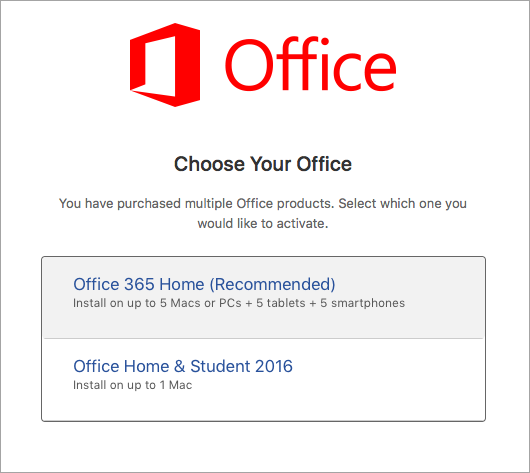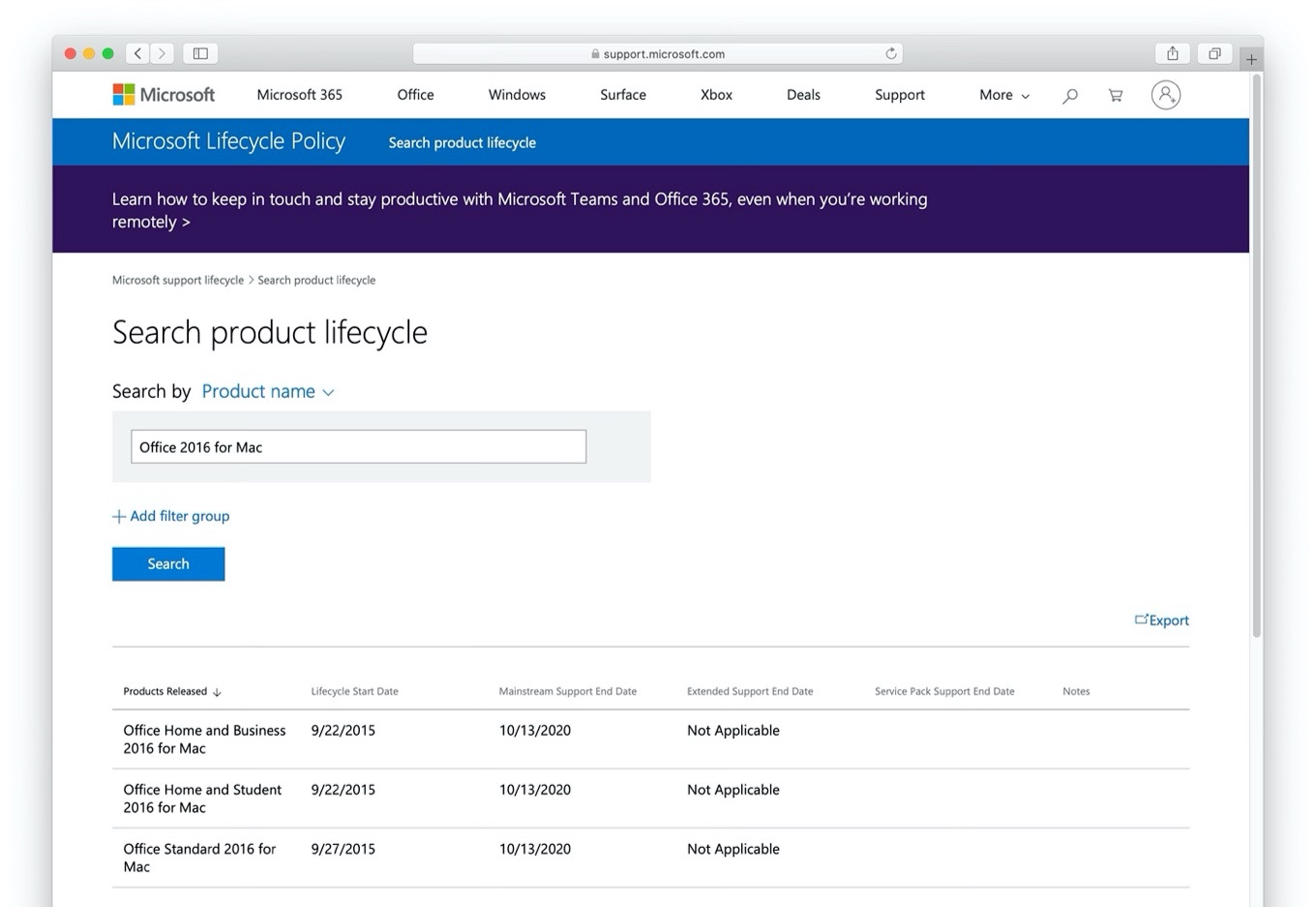If you’re still using Microsoft’s Office 2016 on your Mac computer, you might want to take note that support for the productivity suite will be officially coming to an end in October 2020. This was announced by Microsoft on their support page where they also revealed that the end of support also means that Office 2016 users will no longer be able to connect to Office 365 services.
Office 365 ProPlus, the subscription version of Office that comes with most Office 365 enterprise plans Office 2019, which is sold as a one-time purchase For more information about recommended upgrade paths, see the Office 2010 end of support roadmap, End of Support for Office 2016 for Mac, and the Deployment guide for Office for Mac. However, if you purchased Office 365 subscription, it'll expire depending on the plan that you chose. To know more about the difference between the two, kindly check this article. You can also check the Frequently asked questions regarding Office Home & Student 2016 through this article. Here we will add End of Support events that are coming: Office 2010 End of Support for Windows is coming on; Office 2016 End of Support for Mac is coming on; End of support resources for Office (Microsoft Docs). Support For Office 2016 For Mac Will End In October 2020 By Tyler Lee, on 16:34 PDT If you’re still using Microsoft’s Office 2016 on your Mac computer, you might want to take note that support for the productivity suite will be officially coming to an end in October 2020.
That being said, it should be noted that just because support will be coming to an end doesn’t mean that users will no longer be able to use the software anymore. Office 2016 for Mac will continue to function where you can still create Word or Excel documents and spreadsheets, but don’t expect support in terms of updates or new features. If you rely on Office 365 for connectivity reasons, then that will also no longer be possible.
However, for those who just need to use the software for basic word processing or spreadsheet capabilities, you can go ahead without any issue. In the meantime, if you think that it might be time for an upgrade, Microsoft is selling Office 2019 for $150. Alternatively, if you’d rather not worry about software no longer being supported, there’s Microsoft 365 Personal which will ensure that you’ll always have access for a $70/year subscription.

Microsoft Office For Mac Support

Does Microsoft Support Office 2016
Filed in . Read more about Macos, Microsoft and Office. Source: appleinsider
In a surprise – but welcomed – move, Microsoft announced yesterday that the office support lifecycle for Office 365 ProPlus on Windows 8.1 and Windows Server 2016 are extended to January 2023 (EOL of Windows 8.1) and October 2025 respectively. In addition, Office 2016 connectivity support for Office 365 services will be extended to October 2023 (was 2020).
Other announced changes in product support lifecycles were extending Windows 10 Enterprise & Education support from 18 to 30 months. Also, for Windows 7 Professional & Enterprise, paid security updates (Extended Security Updates) will be offered, and those Windows 7 ESU devices will be supported through January 2023 – parallel to Windows 8.1 – with Office 365 ProPlus.

End Of Support For Office 2016 For Mac 日本語
The intention of these changes is to provide customers more flexibility in adopting modern desktops on the client end (i.e. Windows 10) and upgrade their Office suite, preferably to the susbscription-based ProPlus. The release cadence of the cloud has significant impact on organizations, which were told in February to keep in line with product releases as a lot of product support lifecycles were going to end in 2020.
Office 2016 End Of Life Support
Extending those dates not only gives them more flexibility to plan and upgrade, but also might prevent organizations to do only to the minimum, which is likely the reason many organizations are still on Windows 7 and why it took many organizations a long time to get rid of Windows XP.

